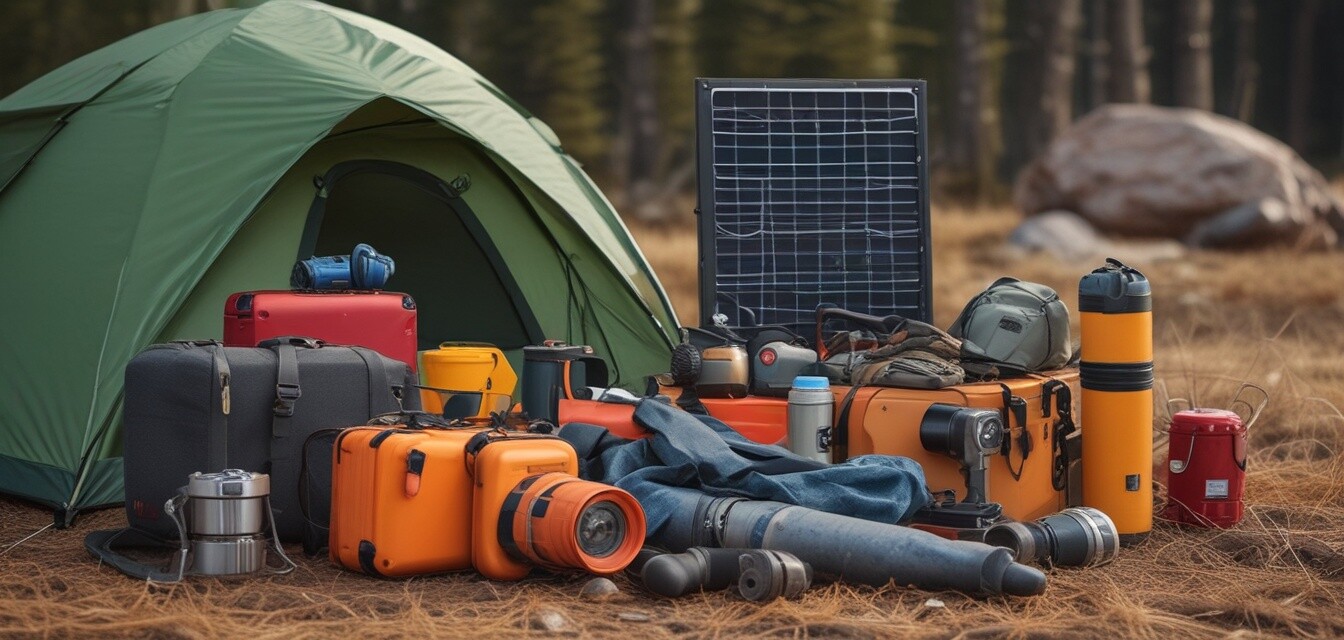
How to adapt solar camping gear for all four seasons
Key takeaways
- Solar camping gear can be adapted to meet the needs of each season.
- Understanding seasonal challenges can enhance your camping experience.
- Maintenance and optimal usage maximize the effectiveness of solar equipment.
- Investing in versatile solar products increases sustainability in camping.
Camping is a fantastic way to escape the hustle and bustle of everyday life, and with solar camping gear, you can make your outdoor experience more sustainable and enjoyable. However, many campers don't realize that adapting their solar equipment for all four seasons is essential for maximum efficiency and comfort. In this article, we'll explore how to effectively use solar camping gear in winter, spring, summer, and fall, ensuring you make the most of your outdoor adventures no matter the weather.
Winter: Adapting to the cold
Winter camping presents unique challenges, especially concerning solar energy collection. Here are some adaptation tips:
- Clear off snow: Ensure your solar panels are free from snow and ice for optimal performance.
- Angle your panels: Adjust the tilt of your panels to capture more sunlight, as the sun's angle is lower.
- Use insulated tents: Look for solar tents that provide insulation to retain warmth.
Table: Key solar gear for winter camping
| Item | Recommendation |
|---|---|
| Solar panels | High-efficiency, foldable solar panels that can be placed at the optimal angle. |
| Smart batteries | Invest in smart batteries that can store energy effectively even in cold conditions. |
| Heating gear | Solar blankets or heated tents can help maintain warmth during cold nights. |
Spring: Preparing for rain
Spring often brings unpredictable weather, especially rain. Here are key tips to adapt your solar gear for spring:
- Waterproofing: Ensure all your solar gear is water-resistant or waterproofed to prolong its lifespan.
- Placement: Choose higher ground for your solar panels to avoid water pooling.
- Multi-functional gear: Consider using solar camping gear that serves multiple purposes, like solar-powered lights with USB ports.
Summer: Maximizing energy capture
Summer is the perfect time for camping, but it comes with its own set of challenges, such as high temperatures. Follow these tips:
- Shade your gear: Protect your solar panels from overheating; use tarps if needed.
- Maximize exposure: Set your solar panels in locations with full sun access, avoiding shaded areas.
- Cooling systems: Look into solar-powered ventilation systems for your tent.
Comparison table: Summer vs. Winter solar setups
| Feature | Summer Setup | Winter Setup |
|---|---|---|
| Energy Collection | Maximized with direct sun | Requires maintenance to clear snow |
| Tent Type | Ventilated, lightweight | Insulated, durable |
| Power Storage | High output expected | Smart batteries offer stable performance |
Fall: Preparing for cooler temperatures
As temperatures drop, you'll want to adapt your camping setup for fall. Consider the following tips:
- Layering: Make sure to have adequate insulation in your gear.
- Use warmer solar lights: Opt for solar lanterns that provide extra warmth.
- Monitor battery performance: Cooler temperatures can affect battery life, so keep an eye on charge levels.
Maintaining your solar camping equipment
Effective maintenance of your solar camping gear is essential for longevity and performance. Here are some tips:
- Regular cleaning: Keep solar panels clean from dirt and debris to maximize efficiency.
- Inspect connections: Check all cables and connections for wear, replacing them as necessary.
- Storage: Store your gear in a dry place when not in use to prevent corrosion.
Beginner tips for solar camping gear
- Always check the weather before heading out to understand how it might affect your gear.
- Choose gear that can serve multiple purposes to save space and weight.
- Practice setting up your solar gear at home so that you’re prepared during your trip.
- Keep a portable charger for emergencies when other methods fail.
Pros
- Renewable energy source
- Reduces reliance on traditional fuel sources
- Eco-friendly and sustainable option
- Convenience of charging devices
Cons
- Initial investment can be high
- Performance can vary based on weather conditions
- Requires maintenance and attention
By adapting your solar camping gear for every season, you can make your outdoor experiences more enjoyable while minimizing environmental impact. Remember, the key is to understand the challenges of each season and equip yourself with the right tools to conquer them. For more insights on innovative solar gear, check out our News and Trends section, and discover how to enhance your camping adventures.